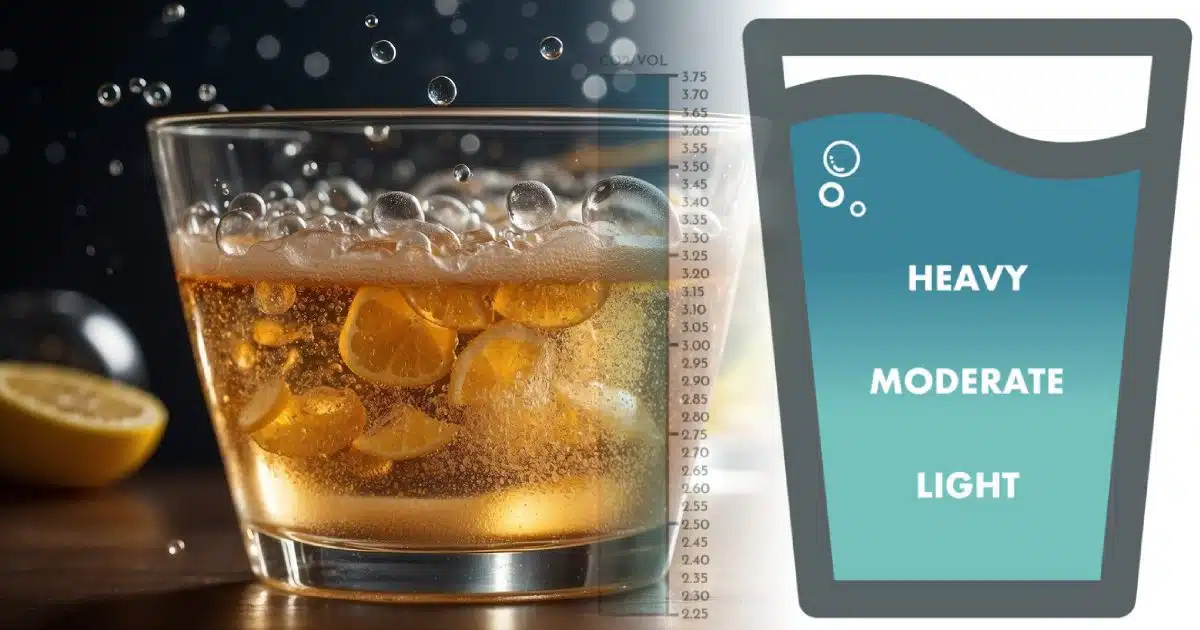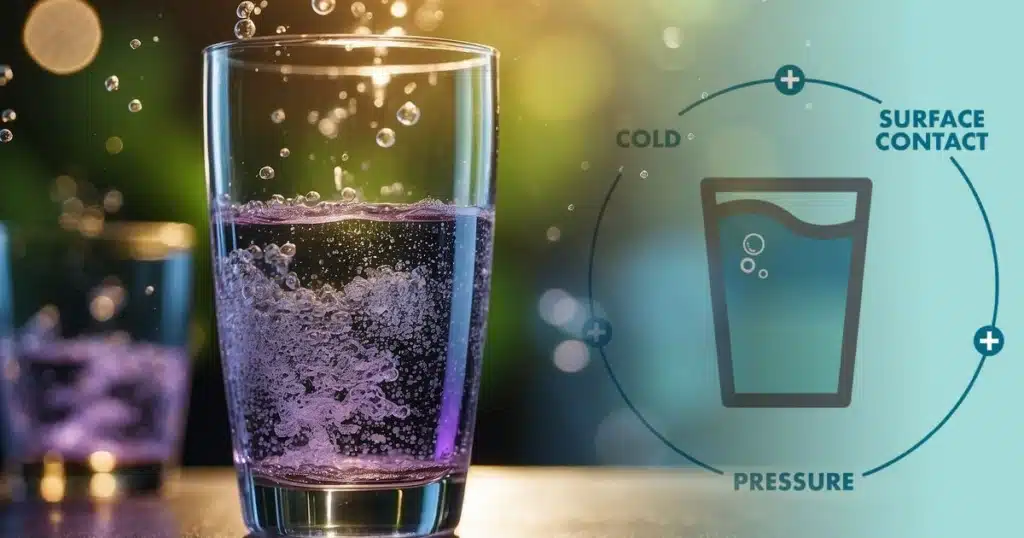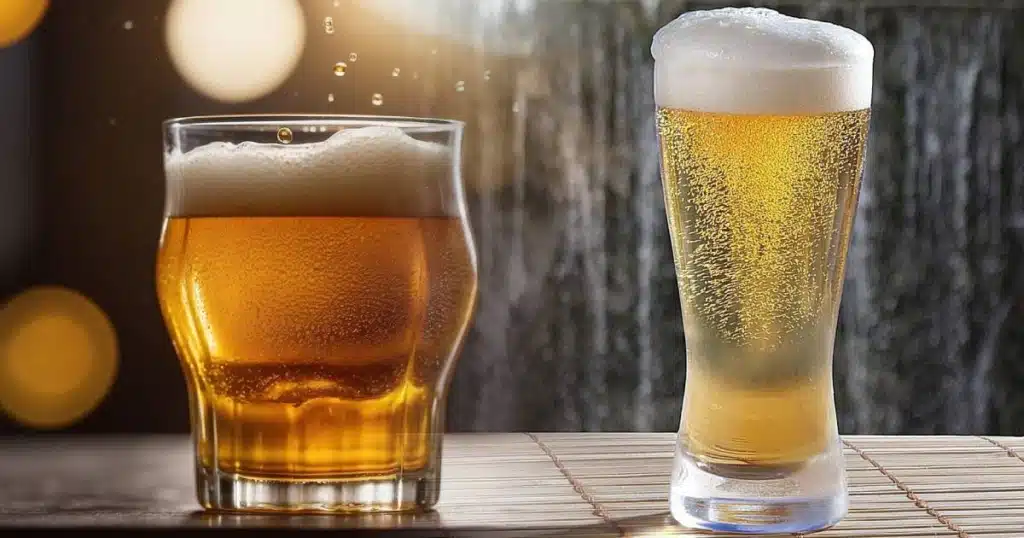Carbonation Levels: Understanding Their Impact on Beverage Taste and Texture

Carbonation, the process of dissolving carbon dioxide gas into a liquid, gives beverages like sparkling water, soda, beer, and champagne their delightful fizziness. This enthusiasm is not just about the sensory pleasure of bubbles dancing on your tongue but also the taste. The level of carbonation in a drink can alter its overall flavour profile, ranging from a soft, tingling sensation to a vigorous and crisp bite. By understanding the role carbonation plays, you can fine-tune your beverages’ flavours, whether it’s a homemade craft beer or a sparkling mocktail.
When aiming to carbonate a drink, managing the carbonation levels is essential. For instance, the soda carbonation level is typically higher than what you might find in certain beers. The sensation of “mouthfeel” can be significantly affected by the amount of dissolved CO2, and different drinks often call for varying carbonation levels. Tools like FastGas CO2 cylinders can aid in achieving the precise carbonation levels in soda or any other carbonated beverages you’re crafting at home. Whether you’re an avid homebrewer or just getting started with DIY carbonated drinks, grasping the concept of carbonation levels will elevate your beverage creation experience.
Key Takeaways
- Carbonation is essential for the fizziness and flavour profile of beverages.
- Different drinks require specific carbonation levels for optimal taste.
- Managing carbonation levels at home can be done with tools like CO2 cylinders.
Understanding Carbonation
Carbonation is pivotal in altering the texture and taste of your favourite beverages. It involves dissolving carbon dioxide gas under pressure in a liquid to create that effervescent fizz and has a measurable impact on flavour and mouthfeel.
Physics and Chemistry of Carbonation
Carbonation occurs when carbon dioxide (CO2) dissolves in a liquid, a process governed by pressure and temperature. The solubility of CO2 increases as the temperature drops and pressure rises. When CO2 dissolves in water, it forms carbonic acid, a weak acid that can lower the pH of the liquid, creating a slight tanginess. The equilibrium between the liquid and the gas defines the volume of CO2 in the liquid—that is, the amount of gas dissolved in a specific volume of liquid, typically measured in volumes of CO2.
Carbonation Methods and Measurement
To carbonate a drink, you can utilise natural methods like yeast fermentation, where sugars like sucrose, glucose, or priming sugar—often used in homebrewing—are converted into alcohol and CO2. Alternatively, forced carbonation involves directly infusing CO2 from a CO2 tank into a chilled liquid at high pressure using carbonation equipment. For precision, a regulator helps control the PSI (pounds per square inch) to achieve desired carbonation levels in sodas and other beverages. Home carbonators and professional carbonation measurement tools can help you monitor and reach the exact level of fizz.
Influence of Carbonation on Beverage Properties
Carbonation’s influence extends beyond just making a drink bubbly. Higher carbonation levels in beverages can enhance the perception of flavour, elevate acidity, and provide a crisp sensation. The right carbonation level can also influence the sweetness, mask certain flavours, and decrease the perception of spoilage. In beer, bottle-conditioned or force-carbonated options exhibit remarkable taste variations, with specific beer styles favouring certain carbon dioxide levels.
To achieve the proper fizz in your drink, whether creating seltzer water with a kick or finessing your homebrew cider’s sparkle, consider using FastGas CO2 cylinders. Balancing the temperature, sugar, and soda carbonation levels with care will yield consistent and satisfying results.
Carbonation in Alcoholic Beverages
Carbonation is pivotal in influencing the overall experience of consuming alcoholic drinks, affecting everything from the tingling sensation on the tongue to the way flavours are perceived.
Beer and Fermentation
Brewers typically introduce carbonation when brewing beer during fermentation. Yeasts produce CO2 naturally as they convert sugars into alcohol. Some beer styles, such as German wheat beers, demand higher carbonation levels, around five volumes of CO2, to enhance the beer’s characteristic mouthfeel and aroma. To achieve precise carbonation for homebrewed beers, you might choose to bottle-condition, where carbonation develops naturally in the bottle, or force carbonate using equipment like a Sodastream or FastGas CO2 cylinders.
Wine and Sparkling Varieties
Sparkling wines and champagnes undergo a secondary fermentation process in the bottle to enrich the wine with carbonation. The carbonation level can have a pronounced effect on the drink’s mouthfeel—too little, and it feels flat; too much can become harsh. Optimal carbonation ensures that the flavours are carried well and the experience is pleasant. Sparkling wines typically have higher carbonation levels than still wines, giving them festive effervescence.
Mixed Drinks and Cocktails
Carbonation can turn a flat cocktail into a fizzy delight when mixing drinks. Incorporating a SodaStream or a mix of sodas and sparkling waters such as San Pellegrino or Perrier can complement the sharpness of the alcohol, like gin, with a tingling texture. Remember that the soda carbonation level will influence the resulting cocktail when pondering how to carbonate a drink. Soda carbonation levels are often ideal for cocktails as they provide a consistent and refreshing zip without overwhelming the palate.
Frequently Asked Questions
This section covers specific questions about measuring and understanding carbonation levels in various beverages, from beers to sparkling waters.
How can you measure the carbonation levels in beverages?
To measure carbonation levels in beverages, you can utilise a carbonation meter or pressure gauge designed for this purpose. These instruments gauge the amount of CO2 in the drink and provide a reading. For at-home methods, observe the volume of bubbles and listen for the hiss when opening a bottle, though these are less precise.
What is considered an average carbonation level for beer?
The average carbonation level for most beers ranges from 2.0 to 2.6 volumes of CO2. This means that each liquid volume of beer contains 2 to 2.6 volumes of dissolved CO2. Beers like British ales typically have lower carbonation, while Belgian and German weissbiers may have higher levels.
In what ways do carbonation levels differ between soft drinks and sparkling water?
Carbonation levels in soft drinks are generally higher, with soda carbonation levels often exceeding 3.5 volumes of CO2. In contrast, sparkling waters have varied carbonation levels but usually contain less CO2 than soft drinks, providing a gentle fizziness.
How are carbonation levels in water generally determined?
During the manufacturing process, CO2 gas dissolved under pressure determines the carbonation levels in water. By adjusting the pressure and CO2 supply, producers can achieve the desired carbonation level for their water products.
Can you provide a chart or guide for understanding different drink carbonation volumes?
While a detailed chart isn’t provided here, a general guide is as follows: still beverages – virtually no CO2; lightly sparkling water – around 1 volume CO2; typical soft drinks and sodas – between 3 to 4 volumes CO2; and beers – typically between 2 and 2.6 volumes CO2. A FastGas CO2 cylinder can help you adjust to specific carbonation levels in your homemade beverages.
What factors influence the variations in carbonation levels among different beverage types?
The variations in carbonation levels among beverage types are influenced by several factors, such as the beverage’s intended flavour profile, mouthfeel, and the tradition of the drink’s origin. Moreover, the production method, including how to carbonate a drink, whether natural fermentation or forced carbonation, plays a significant role.

